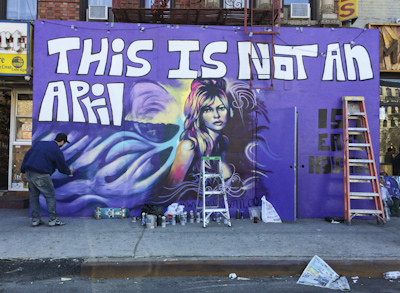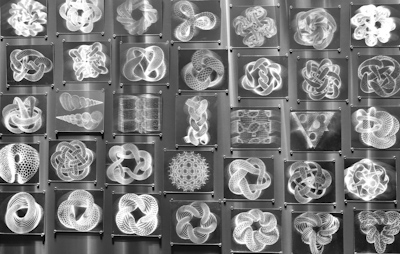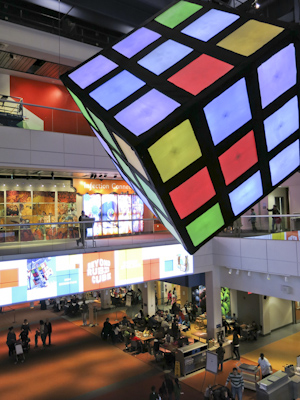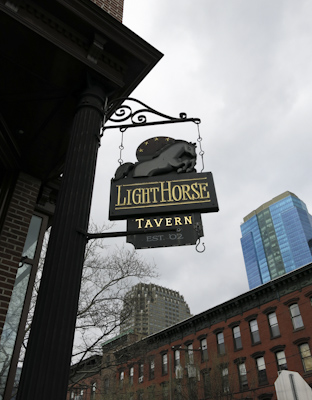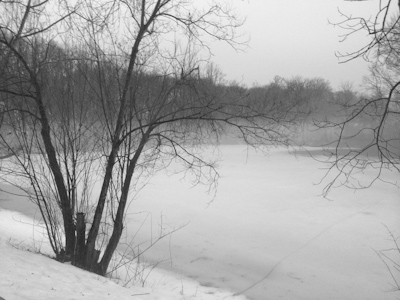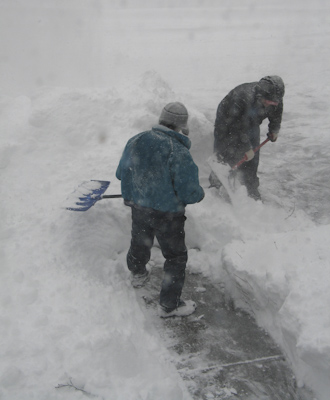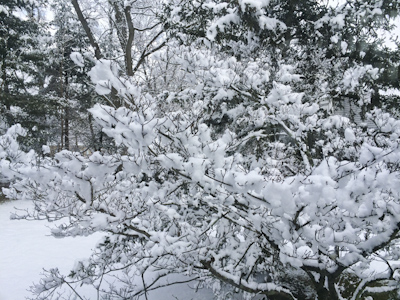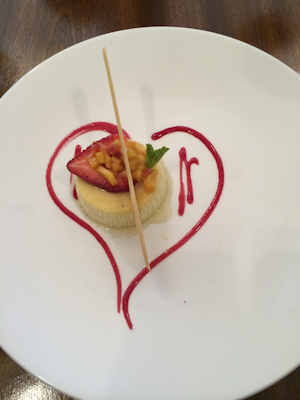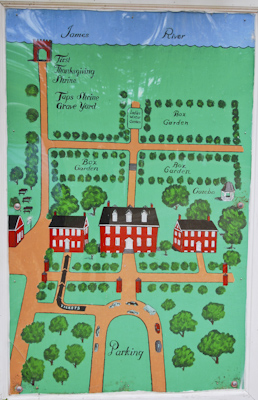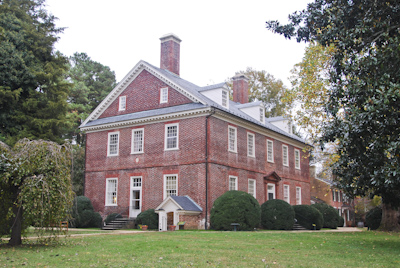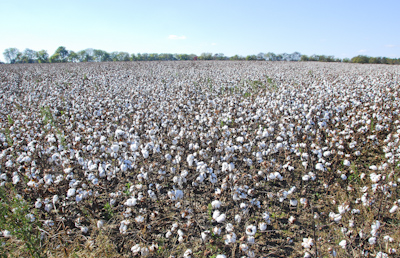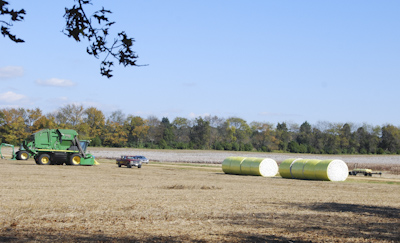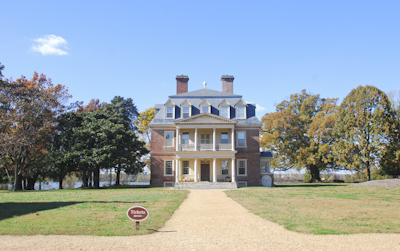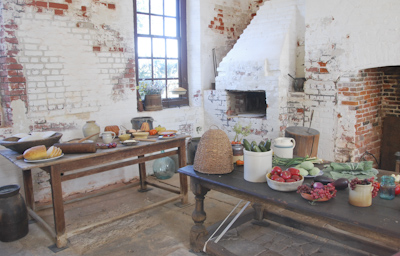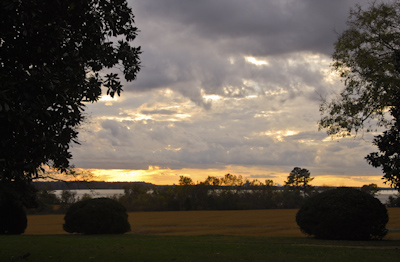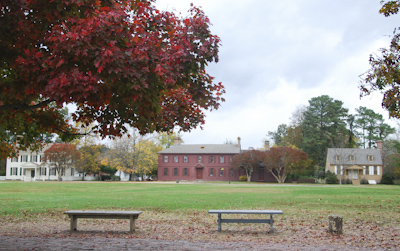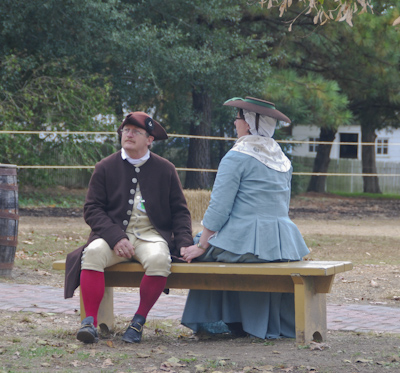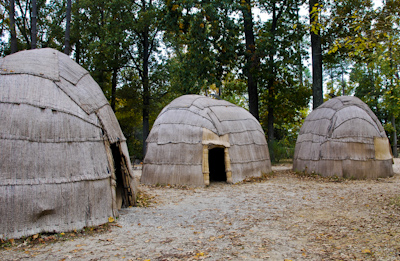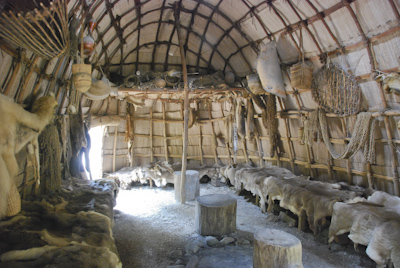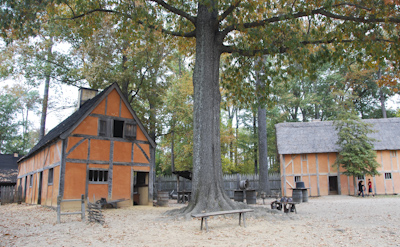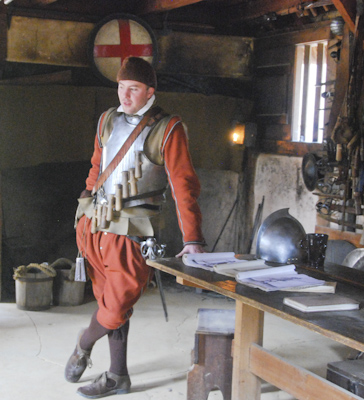Saturday, November 2, 2013
We’re on our way south to a genealogy/history class to learn about the early American colonists who settled in the Tidewater Region of Virginia. The class is a joint effort of Road Scholars and the College of William & Mary in Williamsburg, Virginia. I’m excited about the class because I have traced some early ancestors back to Colonial Virginia and I am looking forward to digging up more information about them and learning about the life and times of that period of American history.
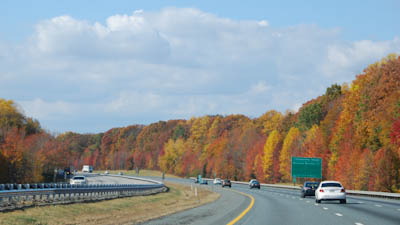 Fall Leaves Along I-95 South
Fall Leaves Along I-95 South
Williamsburg, Virginia is a nine hour car-ride from our house, so we planned to stop about half-way in Baltimore, Maryland. The city was new to both of us and, with a little research, we discovered “The Best Crab Cakes in Maryland” right in downtown Baltimore at John W. Faidley Seafood in the Lexington Market. One of my favorite foods in the entire world are Maryland Crab Cakes, and since I am a purist, I only eat crab cakes in Maryland. Therefore, when in Maryland, I have to eat this delicious treat.
 Located in Downtown Baltimore, Maryland
Located in Downtown Baltimore, Maryland
The first crab cakes I ever ate were at a dock-side restaurant in St. Michael’s Maryland many years ago. As I sat outside at a crude picnic table, a crabbing boat pulled up to the dock and a deckhand offloaded wooden boxes filled with twitching, waving blue-claw crabs. Two men, dressed in kitchen whites, rushed down the dock from the restaurant and hauled the wooden crates up to the kitchen. Now, those were fresh crabs!
 Oyster Bar at Faidley Seafood
Oyster Bar at Faidley Seafood
Patrons at the restaurant ordered ‘lump-meat’ crab cakes or whole steamed crabs. Over a couple of days in St. Michael’s, I tried both preparations. A dozen whole steamed crabs were dumped onto butcher paper which had been rolled out across my wooden table. Eaters received nutcrackers and narrow picking tools and a bucket for shells. It was a crude, messy, hands-on meal, but fun. Of course, the Maryland Crab Cakes were heavenly. They were prepared with huge lumps of succulent crabmeat, perfectly seasoned, and lightly fried. Maryland Crab Cakes immediately became the gold standard for all crab cakes in my future.
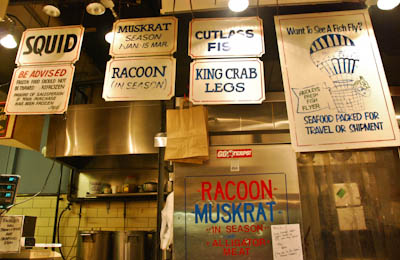 Variety of Offerings at Faidley Seafood & Game
Variety of Offerings at Faidley Seafood & Game
This afternoon, we found ‘The World Famous Lexington Market’ in downtown Baltimore. As we circled the market looking for a place to park our car, we saw a sign for Faidley Seafood. We entered Faidley’s from the street and were pleasantly surprised to see the place busy with patrons on a Saturday afternoon. There was an oyster bar in the center and the rest of the large space was filled with tall stand-up communal tables. Patrons order from a menu on the wall and slide their trays along to the cashier. Under the menus, the current owner was forming crab cakes from a freshly prepared secret-ingredient mixture. See her photo below.
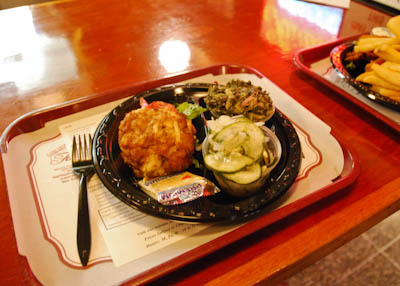 My Crab Cake with Greens & Cucumber Salad
My Crab Cake with Greens & Cucumber Salad
So, how did my Crab Cake taste? Delicious. It was a baseball size ‘cake’ of sweet juicy large lumps of crab loosely held together by a lightly spiced mixture. It was incomparable and very good. The spices didn’t overpower the crabmeat and there was no bread holding it together. It was the pure taste of crabmeat.
 Chef/Owner of Faidley Seafood
Chef/Owner of Faidley Seafood
After our lunch, we walked around Lexington Market to explore. We saw many food stalls, meat markets, bakeries, and produce sellers. The market was a bee-hive of activity, filled with Baltimore locals enjoying a pleasant fall afternoon with their families. Afterwards, we retrieved our car from the parking lot and drove around the city.
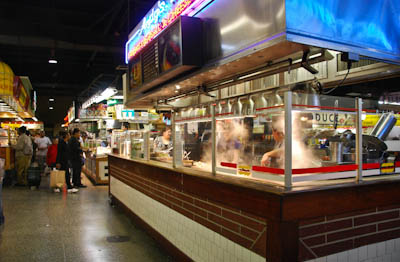 Another Food Stall at the Lexington Market
Another Food Stall at the Lexington Market
It was a good beginning to our historical adventure in Colonial America. Baltimore has a lot to offer tourists, in addition to crab cakes. We plan to return soon to visit: the Edgar Allen Poe House and Gravesite, the 1854 USS Constellation, a US Coast Guard ship built in 1935, the Lightship Chesapeake, and, of course, the Baltimore Museum of Art.
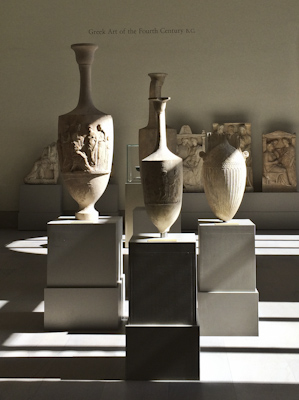 Greek Amphoras at the Met Museum
Greek Amphoras at the Met Museum